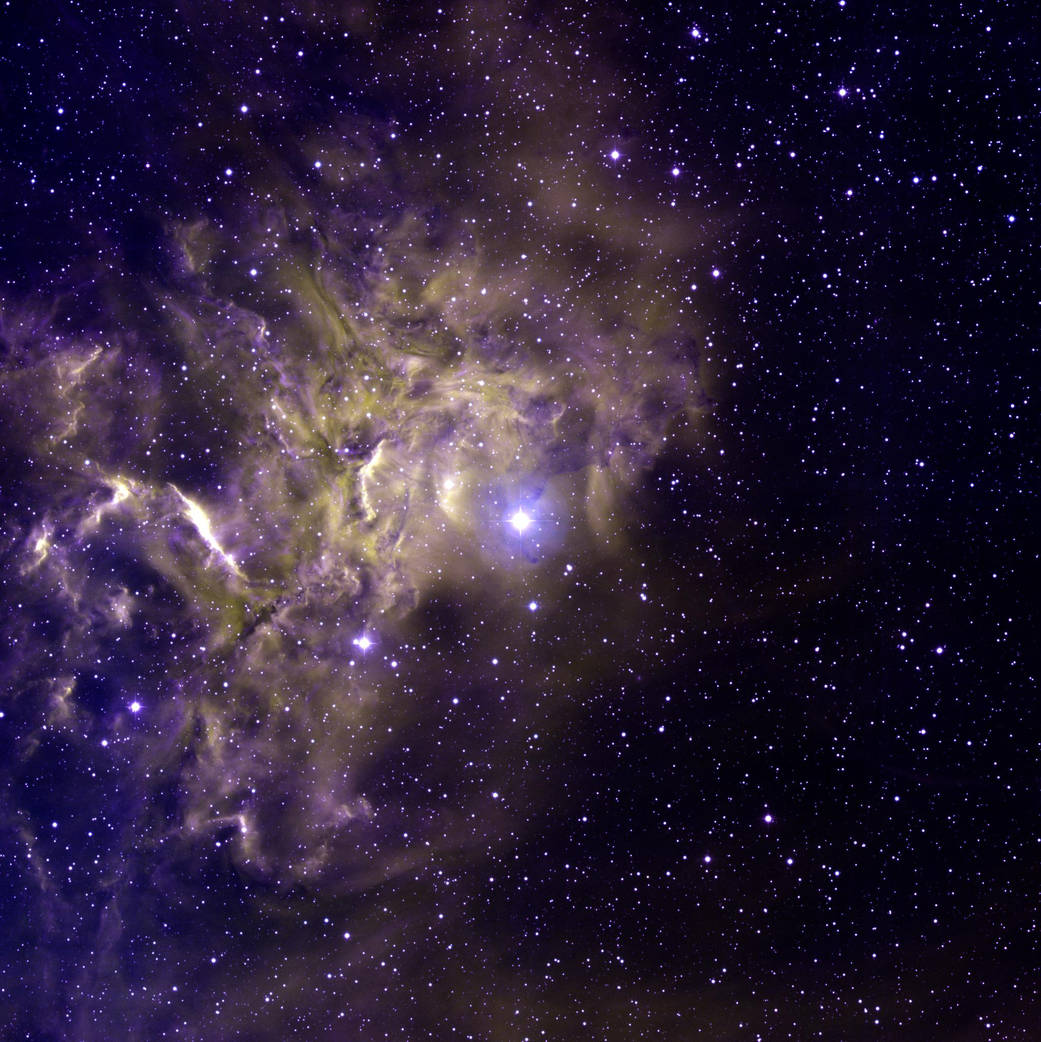
This is a false-color image of the star AE Aurigae (bright source of light near the center of image) embedded in a region of space containing smoke-like filaments of carbon-rich dust grains. Such dust might be hiding deuterium, an isotope of hydrogen, and stymieing astronomers' efforts to study star and galaxy formation.
This is a false-color image of the star AE Aurigae (bright source of light near the center of image) embedded in a region of space containing smoke-like filaments of carbon-rich dust grains. Such dust might be hiding deuterium, an isotope of hydrogen, and stymieing astronomers’ efforts to study star and galaxy formation. NASA’s Far Ultraviolet Spectroscopic Explorer (FUSE) satellite has surveyed the local deuterium concentration in the galaxy and found far more than expected. Because deuterium is a tracer of star and galaxy evolution, this discovery has the potential to radically alter theories about how stars and galaxies form.Image credit: T.A. Rector and B.A. Wolpa, NOAO, AURA and NSF


























